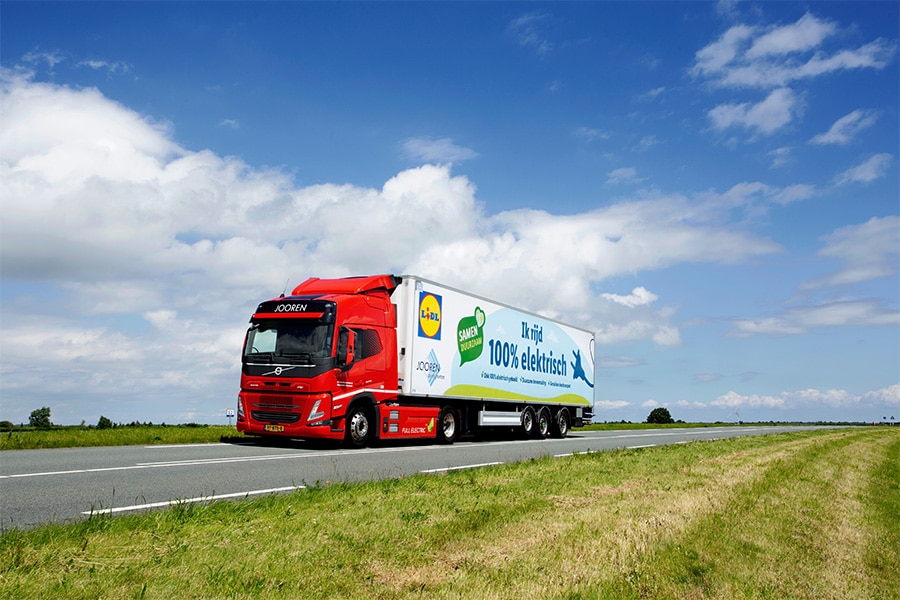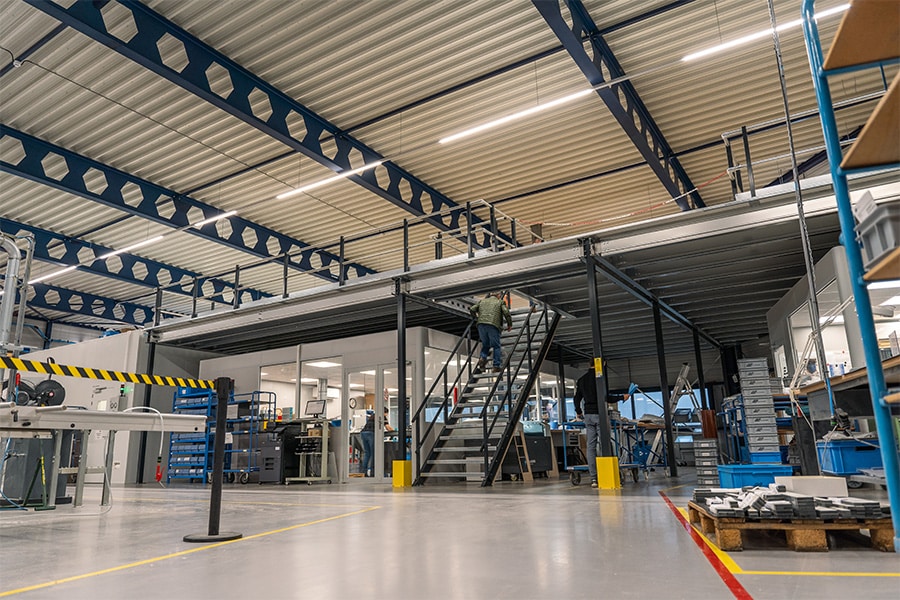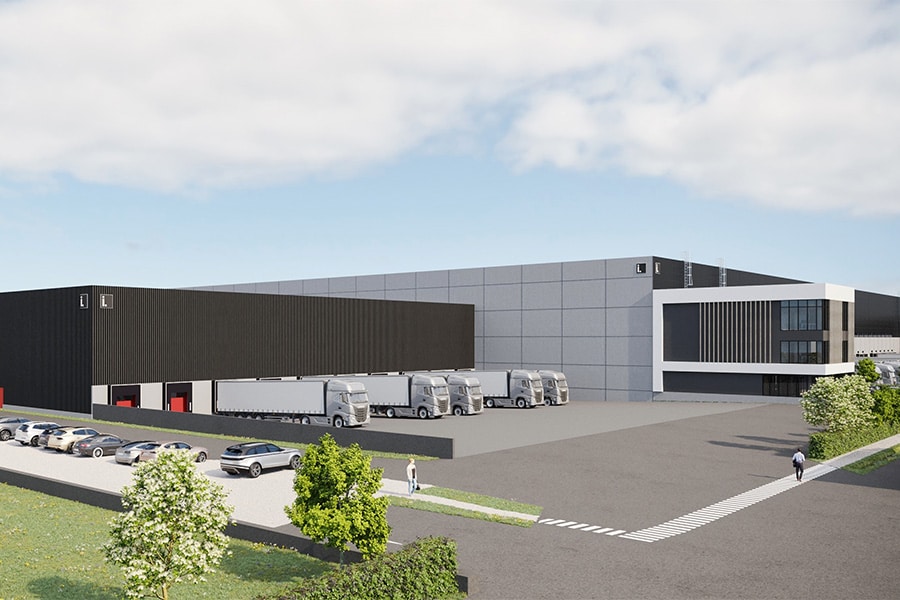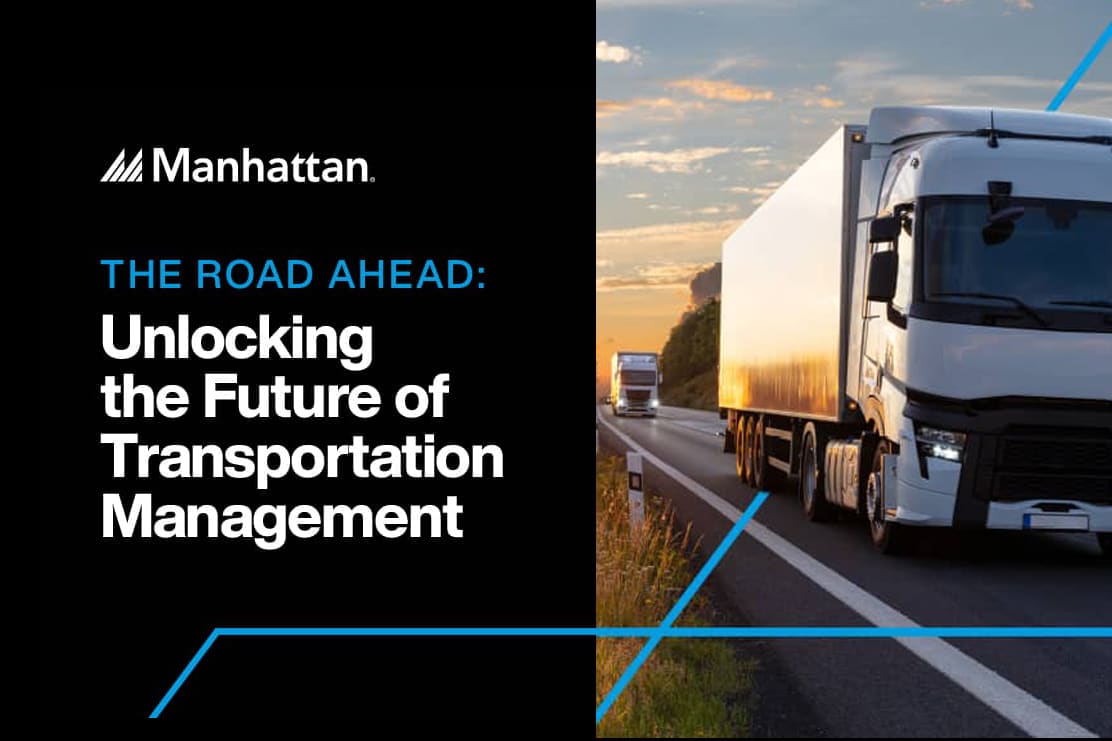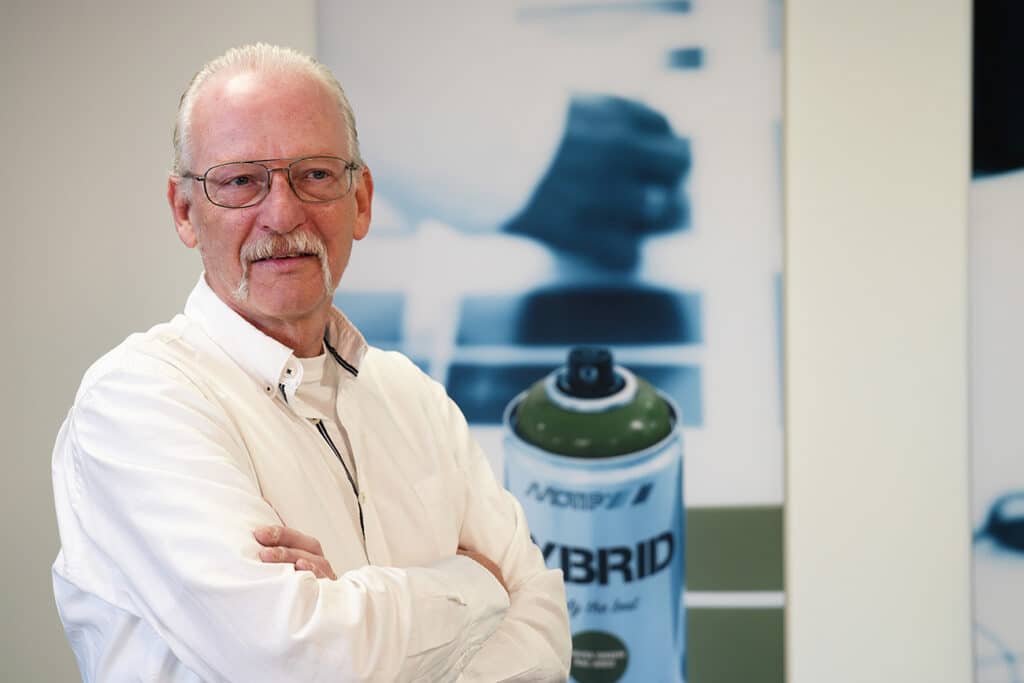
Less downtime thanks to AGVs
Substantial savings for aerosol manufacturer
Having previously commissioned a fully automated high bay warehouse, European Aerosols of Wolvega recently automated much of its internal transport. The new automation provides substantial savings and minimizes the risk of error.
"We are ready for further growth," Johan Helmich of European Aerosols (then Motip Dupli) ended his story in the Spring 2019 Jungheinrich Journal. In that article, the Facilities Manager explains how the then brand-new fully automated high bay warehouse accommodates the spray can manufacturer's continued growth while greatly improving fire safety. In his mind at the time, Helmich was already toying with ideas for further optimization of internal logistics. Those next steps have now been realized. As with the realization of the fully automated high bay warehouse, the expertise of Jungheinrich was also called in this time.
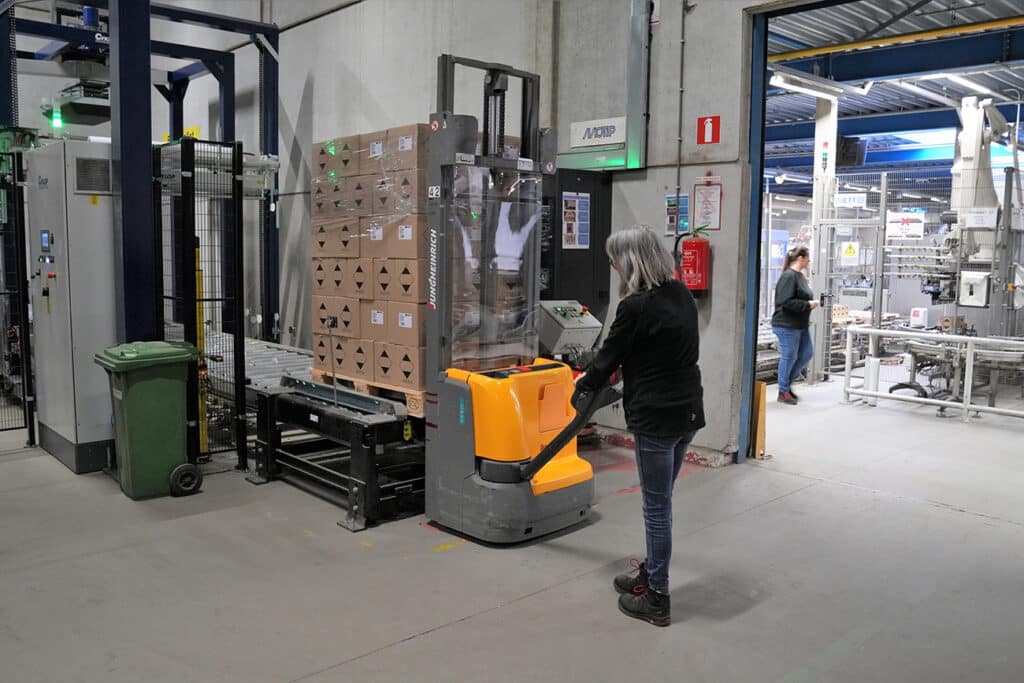
"As a system integrator, they have automated much of the material handling," explains Johan Helmich. For that improvement, Jungheinrich supplied, among other things, two automated stackers, type ERCa.
Error probability minimized
From the production hall, pallets of finished product head toward the high bay, or directly to the shipping floor. "Previously, this was done with manually operated trucks. At inbound, the pallets were manually wrapped and labeled by other employees and then picked up again and placed on the roller conveyor to inbound or expedition, after which they continued their route to the high-rise building. So a lot of hands and pallet movements," Helmich explains.
The working method also led to regular breakdowns in the fully automated high bay warehouse. Helmich: "Sometimes the warehouse cranes stopped working two or three times a week. Then, for example, a piece of wrapping film was hanging loose, or the pallet was of poor quality. About half of all downtime was a result of manual work." Automation has minimized the chance of those errors.
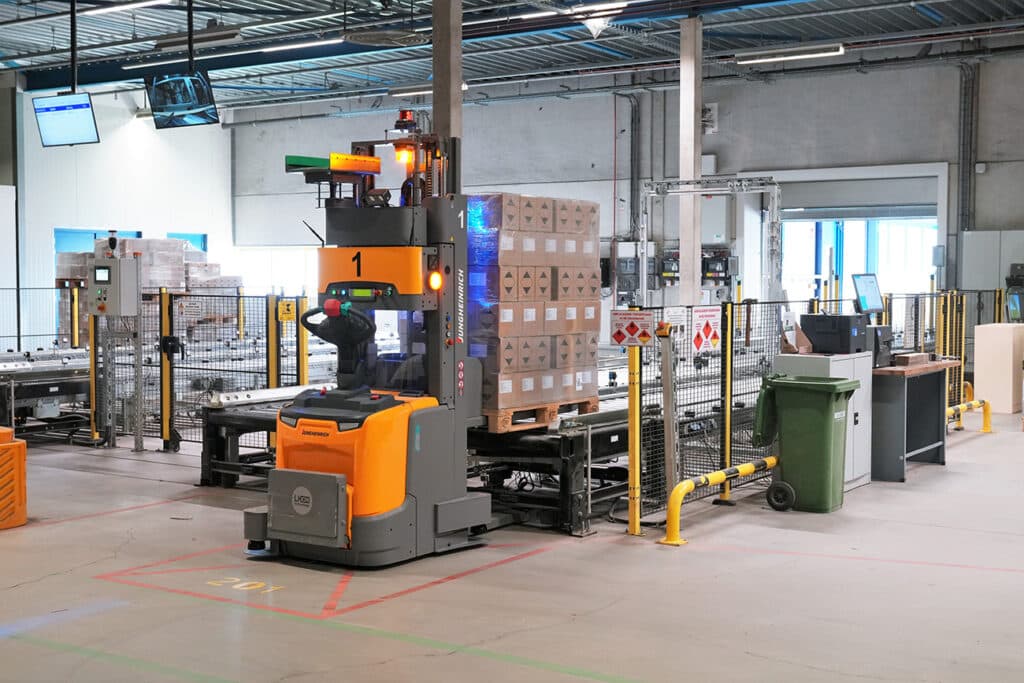
Substantial savings
The pallets coming out of production are sealed by an automatic wrapper integrated into the roller conveyor. Always equally stable and thanks to the new wrapper, which seals the film thermally, without any loose film. "Pallets that go directly to the shipping department are wrapped even more stably," Helmich adds. Pallets going to the high-bay are also automatically top-sheeted and labeled.
At the end of the conveyor, the pallets are picked up by Jungheinrich automated guided vehicles (AGVs), transported to their respective destination and placed on a subsequent roller conveyor. "We need significantly fewer FTEs. Given the current tight labor market, this is a big advantage. With our three-shift deployment, the savings in manpower for this part of the process is substantial. The payback time is therefore less than two years," Helmich summarizes the main advantage. But automation offers more. Unnecessary pallet handling is a thing of the past. The risk of malfunctions in the high-bay warehouse is also significantly reduced. And there is more peace and order in the entire operation.
"Admittedly; we were a little skeptical about deploying AGVs. It is totally new and unknown after all, but now we are completely convinced. I even see opportunities for further automation within our group. There is definitely more future for AGVs within our organization," Johan Helmich concludes.
Heeft u vragen over dit artikel, project of product?
Neem dan rechtstreeks contact op met Jungheinrich Netherlands.
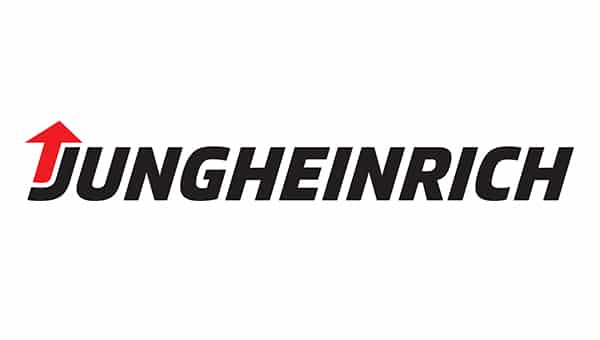 Contact opnemen
Contact opnemen
